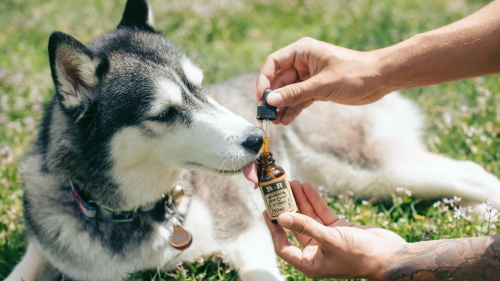The Rise of Fresh, Human-Grade Pet Food: What Pet Owners Should Know

Pet food has undergone tremendous change over the past decade. A market once dominated by dry and canned kibble, it has diversified into a host of new categories: raw, freeze-dried, lightly cooked, and, increasingly, fresh, human-grade pet foods. Pet owners are no longer content with simply feeding their pets—they demand food that rivals human cuisine in terms of quality, freshness, and transparency.
This shift reflects the deep-seated appreciation of pets as family members. Consequently, demand for pet food made with recognizable, clean ingredients has surged. Industry reports indicate that the human-grade pet food market is one of the fastest-growing segments in the global pet industry, projected to experience double-digit growth over the next decade. This trend is no passing fad; it represents a redefinition of acceptable nutrition for our furry companions.
However, with this opportunity and enthusiasm come challenges: confusing labeling, exaggerated claims, and new nutritional and safety risks. This article explores the true meaning of "human-grade," the science behind its rise, and how pet owners can make informed decisions about these products.
What exactly does "fresh, human-grade pet food" mean?
The term "human-grade" sounds straightforward, but it's actually quite nuanced.
To meet human-grade standards, every ingredient and the entire production process—from storage to production to transportation—must meet standards for human food. This means that the sourcing, handling, and cooking of meats, vegetables, grains, and supplements must comply with human food hygiene regulations.
In contrast, feed-grade pet food is produced according to standards designed for animal consumption only and may include lower-quality ingredients, by-products, and higher levels of preservatives or processing agents.
"Fresh" typically means the food is lightly cooked or minimally processed and is typically refrigerated or frozen rather than kept at room temperature. Fresh food typically avoids artificial colors, flavors, and synthetic preservatives. It often uses whole meats and fresh produce rather than rendered or highly processed ingredients.
In essence, fresh, human-grade pet food aims to bridge the gap between home-cooked food and commercial pet food—offering a safer, cleaner product with greater nutritional transparency.
Why pet owners choose fresh, human-grade food?
Several social and practical factors are driving this movement:

1. Pets as Family
Today, pet owners view their pets as true family members. They expect to feed them the same way they feed their children—with real, high-quality ingredients. The emotional bond between people and pets is shifting expectations about food quality and driving a demand for transparency and trust.
2. Health and Allergy Issues
Veterinarians are diagnosing an increasing number of cats and dogs with food allergies, intolerances, and chronic digestive issues. Traditional kibble often contains common allergens such as corn, soy, and artificial additives. Human-grade formulas, with their simpler ingredients and higher-quality protein, may reduce these issues and promote overall gut health.
3. Transparency and Food Safety
Following a series of pet food recalls over the past decade, consumers have become wary of mass-produced products. Human-grade brands emphasize traceability, cleaner supply chains, and stricter quality control. Many pet owners find peace of mind knowing that the food they purchase is also suitable for human consumption.
4. Innovation in the Pet Food Industry
Large pet food companies are no longer ignoring this trend. Major brands are now launching human-grade product lines that are refrigerated, fresh, or subscription-based to attract health-conscious consumers. Smaller, boutique brands are rapidly innovating with local ingredients, novel proteins, and sustainable packaging.
5. Willingness to Pay for Quality
While human-grade pet food is more expensive than traditional kibble, many owners consider it a worthwhile investment. For pets with allergies, sensitivities, or chronic conditions, the benefits, from reduced veterinary visits to a shinier coat, may outweigh the price.
The Science and Benefits of Fresh, Human-Grade Food
While the science behind human-grade pet food is still evolving, existing research and veterinary observations point to several potential benefits.
1. Better Digestibility
Fresh food retains more natural enzymes and nutrients than heavily processed kibble. Pets can absorb nutrients more efficiently, resulting in smaller, harder stools and fewer digestive issues.
2. Improved Coat and Skin Health
High-quality protein, omega-3 fatty acids, and fewer fillers improve skin hydration and reduce irritation. Owners typically notice a shinier coat and fewer hot spots and dandruff.
3. Enhanced Energy and Weight Management
Fresh foods are typically higher in protein and lower in empty carbohydrates. This helps maintain muscle mass, prevent obesity, and maintain healthy energy levels.
4. Reduced Allergies and Sensitivities
Simpler recipes with recognizable ingredients make it easier to find and eliminate allergens. For pets suffering from chronic itching, ear infections, or digestive issues, switching to a cleaner, more human-like diet can provide relief.
5. Boosted Immune System
Human-grade foods typically use fresh fruits and vegetables rich in antioxidants and vitamins to support immune health and reduce inflammation.
Regulations and Labeling: What Owners Should Know
In the United States, pet food is regulated by the U.S. Food and Drug Administration (FDA) and overseen by state agencies under the guidance of the Association of American Feed Control Officials (AAFCO). To be labeled "human-grade," a product must have ingredients and manufacturing processes that meet human food standards. However, not all brands claiming "human-grade" are created equal. Note:
● Confirm the AAFCO nutritionally appropriate claim for your pet's life stage.
● The label states "complete and balanced."
● A transparent ingredient list uses real food names, like "chicken breast" or "carrots," rather than vague terms like "meat by-products."
● Manufacturing details confirm that the product is produced in a human food facility.
Understanding labels can help cut through marketing noise and ensure your pet's diet truly meets human standards from start to finish.
The rise of fresh, human-grade pet food marks a revolutionary change in the way we feed our furry companions. No longer content with kibble and canned foods laden with vague "meat by-products" or synthetic fillers, pet owners are seeking real, recognizable ingredients that reflect the qualities of their own food. This trend reflects a deeper societal shift in understanding animal welfare, nutrition, and transparency.
While the benefits of fresh pet food are clear—think shinier coats, improved digestion, increased energy, and reduced allergies—it's not a one-size-fits-all solution. Every pet's dietary needs are unique, and transitioning to a fresh food diet requires careful planning, veterinary guidance, and a keen understanding of portion control.
Ultimately, the rise of human-grade pet food underscores a powerful truth: Pets are family. They deserve the same love, attention, and nourishment as any loved one. By making smart choices—balancing freshness and safety, convenience and quality—pet owners can ensure their pets thrive not only in the short term, but throughout their lives.



